Planning on trekking the EBC soon? The Himalayas are no joke—make sure you come prepared. This guest post from Lotte of Phenomenal Globe has all the advice and things to know before hiking the Everest Base Camp Trail in Nepal.
Hiking the Everest Base Camp trail in Nepal is a dream of many travelers, and a once in a lifetime experience. While definitely not an off-the-beaten path trail for Nepal, the amount of people visiting EBC each year is nothing compared to overrun cities like Amsterdam, Paris, or Venice.
Crowds or no crowds, the Himalayan scenery is breathtaking, and this is the closest you can get to the tallest peak in the world, 8,849 meter (29,000 ft) Mount Everest… unless you plan on scaling Everest, which isn’t necessarily you should aspire to.
Before you set out on the EBC trek, read this post to prepare yourself! From planning your Everest Base Camp budget and itinerary, to deciding what to pack for the EBC trek, planning is key when it comes to staying safe while hiking the Everest Base Camp Trail in Nepal.
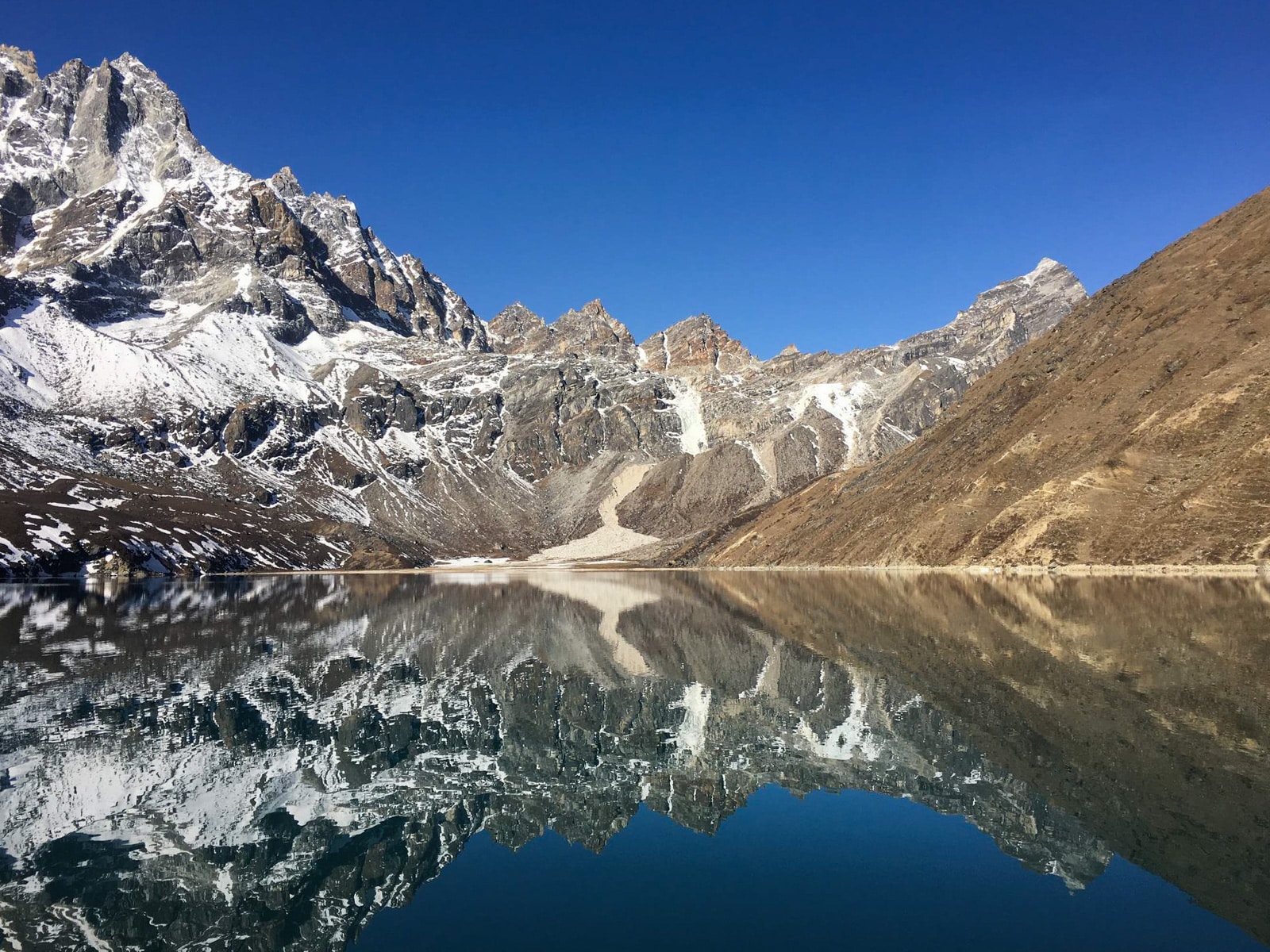
Gokyo Lake, one of many stunning views along the Everest Base Camp trek
10 things to know before trekking the Everest Base Camp Trail in Nepal
- Altitude sickness is a real risk
- Take your time while trekking
- It’s best to start your trek in Jiri
- Hiring a local guide is helpful
- Pack a filter bottle or Steripen
- Staying hydrated is essential
- Bring an e-reader or book
- A properly fitted backpack is a must
- Buy some of your hiking gear in Kathmandu
- Enjoy it!
1. Altitude sickness is a real risk of the Everest Base Camp Trail. Educate yourself.
Hiking the EBC is a physical challenge. Every year, people get very sick (and even die) because they don’t listen to their bodies or they take (unnecessary) risks. Read up on altitude sickness and its symptoms so you know how to recognize them.
Altitude sickness occurs when you travel to a high altitude too quickly. As you ascend, oxygen levels decrease and it takes time for your body to adjust. If you ascend too quickly, your body can’t hope with these lower levels of oxygen and you can experience symptoms such as dizziness, headache, shortness of breath and nausea. It can happen to anyone above 2,000 meters, and is not necessarily related to how fit or unfit someone is.
Read: That time I almost died from altitude sickness in Tajikistan
Altitude sickness comes in several forms, and the worst are very serious conditions. If left untreated you can die.
However, don’t let the possibility of altitude sickness deter you from hiking the EBC trail! You can minimize the risk of altitude sickness by taking several measures; continue on to the next few points to find out how.
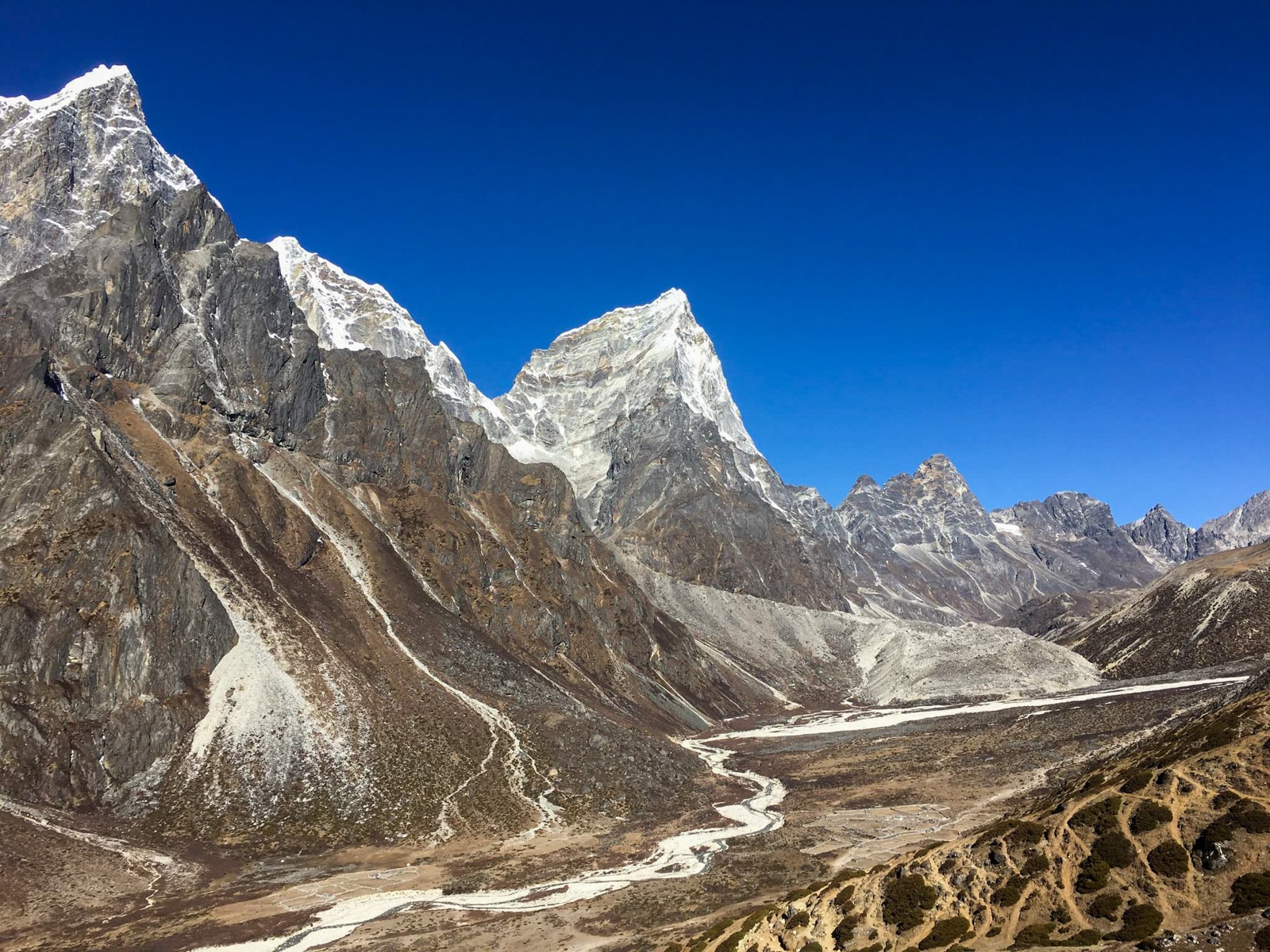
Valley near Dughla
2. Take your time while trekking the EBC
The best way to avoid altitude sickness—and make the most of hiking the EBC trail—is to take your time. Give your body time to get used to the altitude, and your mind time to process the spectacular surroundings.
Let’s be honest: you will probably only trek to Everest Base Camp once in your life, so why not give yourself plenty of time to soak it all in?
Follow the recommendations when it comes to acclimatization days, drink plenty of water, avoid alcohol, and consider starting your hike in Jiri for optimal acclimatization.
Read: How to get trekking permits in Kathmandu
3. It’s best to start your EBC trek in Jiri
Most people fly from Kathmandu to Lukla and start trekking the EBC trail there. However, before the landing strip at Lukla was built, all EBC hikers and climbers (including the famous Edmund Hillary) started their adventure in Jiri.
The small mountain village can be reached by bus from Kathmandu, eliminating the need to fly. From Jiri, it takes six days to hike to Cheplung, where you’ll join the ‘regular’ EBC trail.
Aside from the fact it’s more responsible to avoid flights where possible—climate change is wreaking havoc in the Himalayas already—there are many more reasons why starting your Base Camp hike in Jiri is a good idea:
- Starting in Jiri gives your body more time to acclimatize. Jiri is located “only” 1,995 meters (6,545 feet) above sea level, whereas Lukla is at 2,860 meters (9,383 feet). By starting from Jiri, you will ascend at a much slower pace, thereby reducing the risk of altitude sickness.
- The trail from Jiri to Cheplung sees only a fraction of the people who hike the EBC trail. You’ll have beautiful green mountain landscapes virtually to yourself!
- This area of Nepal was badly affected by the earthquake that occurred in April 2015. Many houses are still in ruin. If there was ever a place in Nepal to spend your money, it’s there. By eating and staying at one of the small lodges along the Jiri – Cheplung trail you can generate a bit of income for people who have had a very tough few years.
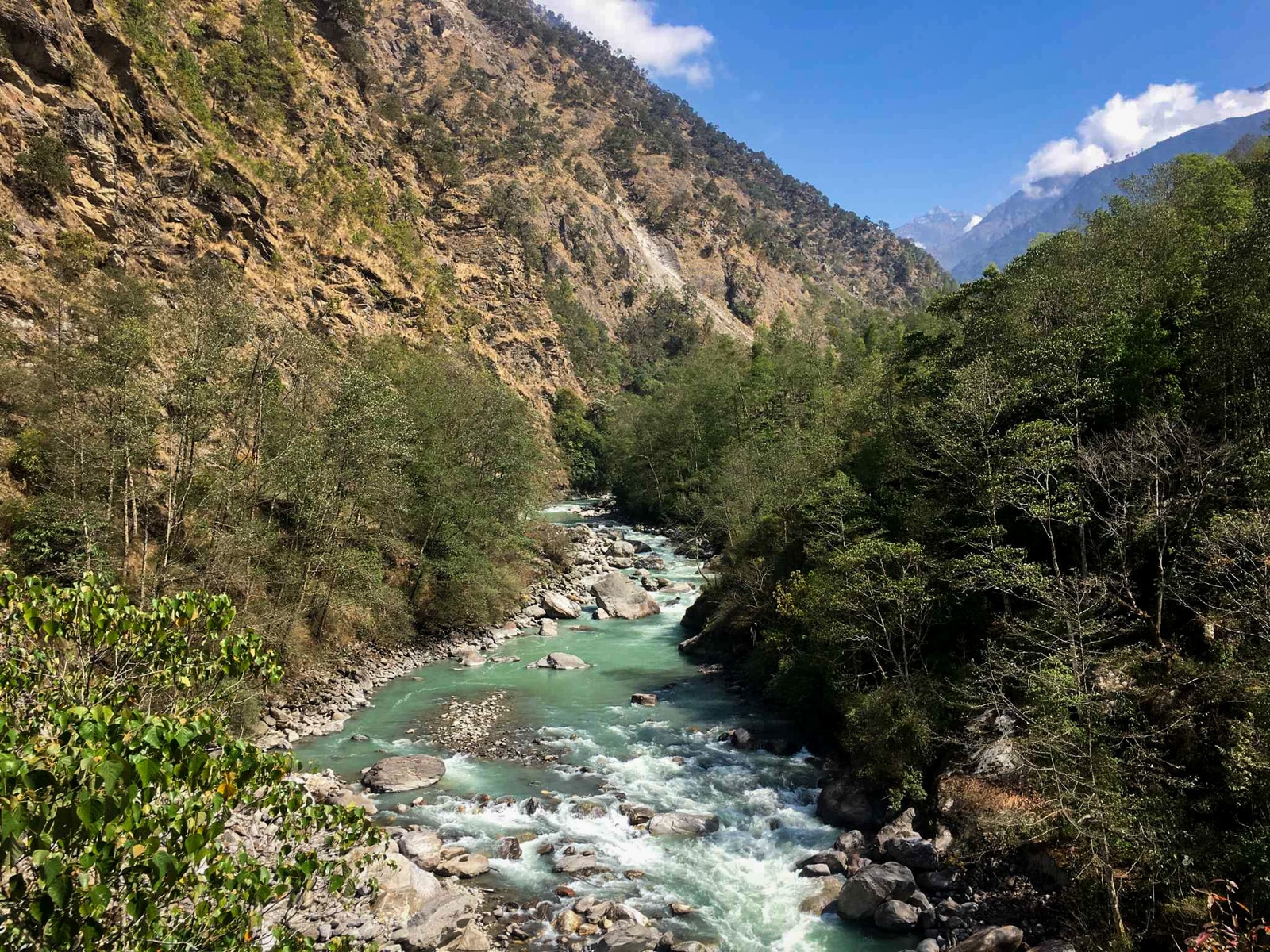
One of the views on the Jiri – Cheplung trail
4. Hiring a guide isn’t necessary, but it helps the local economy
I’ll be honest: when it comes to directions, you don’t need a guide when hiking the EBC trail.
If you prepare well, buy the Nepal hiking Lonely Planet, a detailed hiking map in Kathmandu, and download a map you can use offline (for example from Maps.me) it’s virtually impossible to get lost. The trail is generally either well-marked or glaringly obvious. Often, there’s only one track you can follow. Most of the time there are other hikers on the trail as well.
That being said, there are definitely advantages to hiring a local guide. For starters, it’s a good way to support the local economy. What’s more, guides are generally very knowledgeable about the area as they often grew up in the mountains. They can tell you many interesting things about the Himalayas as well as explain customs and culture in Nepal.
Furthermore, they know every lodge and every lodge owner along the Everest Base Camp trek. Guides often call ahead to make reservations; you’ll never have to worry about not having a place to sleep. Also, while they aren’t medics, guides recognize altitude sickness symptoms immediately and know exactly what to do.
Guides can be hired through trekking companies, or through people you meet once on the ground. The best guides are usually booked well in advance, so if you want the cream of the crop, do some research and hire a guide through an accredited trekking agency in advance. Guides cost around US$25-50 per day, porters a bit less.
5. Bring a water filter bottle or SteriPen to avoid plastic waste
When hiking EBC, you will need a way to clean your water as (obviously) you want to avoid having to buy single use plastic water bottles on the track. In fact, as of January 2020, bottled water is no longer available in the Everest region. Excellent news for our plastic-filled planet!
A much more sustainable alternative is carrying a water filter bottle. There are several brands; Lifestraw is a well-known one and I have used their water filter bottle for several years. These types of bottles typically filter out 99,99% of bacteria. You can buy Lifestraw filter bottles here.
Alternatively, you can use a SteriPen which uses short wave germicidal UV light to purify water. If you decide to bring a SteriPen, be sure to bring along rechargeable batteries to use it throughout your entire hike. You can also buy water purification tablets, though I personally very much dislike the taste of water treated with these tablets.
Read: 10+ items I use and recommend for backpackers
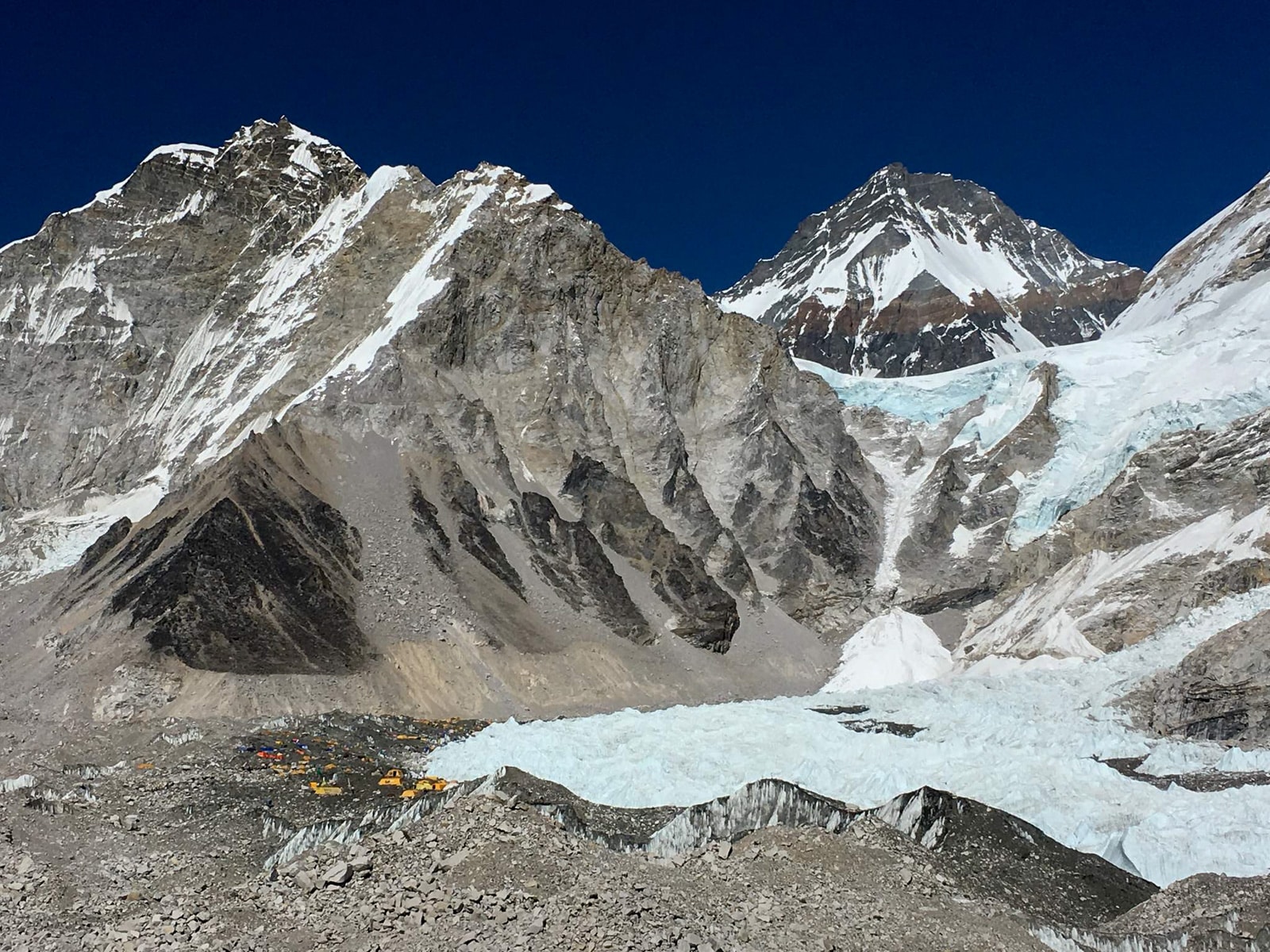
The final destination: Everest Base Camp
6. Make sure to stay hydrated while trekking
The higher you get on the EBC trek, the more strain it puts on your body. Higher altitudes mean lower oxygen levels, and this has an impact on your metabolism and other processes in your body. It may shock you, but to minimize the chance of getting altitude sickness you will need to drink at least 3 liters of water each day.
That’s why you need a way to carry at least 2 liters of water per person. This water doesn’t have to be cleaned yet; you can do that along the way. Fill up a 2-liter hydration bladder each morning, but don’t drink from this directly. Instead, put the water from your hydration bladder into your water filter bottle (or any bottle if using the SteriPen) to purify it.
Alternatively, if traveling with several people, you can bring a larger camping water filter that uses gravity to filter out bacteria. The Platypus GravityWorks is fast, easy to use, and packs down small. Invest in a Platypus filter here.
It’s easy to lose track of the amount of water you drink during a day, so I recommend making a note in your phone every time you finish your bottle. It sounds silly, but it really helped us drink the recommended amount each day.
7. Bring an e-reader or book when packing for the EBC
You may have bought a local SIM card in Kathmandu, but forget about going online while trekking the EBC trail. You will not have signal for the majority of the trail.
Reception is either very bad or nonexistent. Truth be told, it’s better that way. Remember those days before smartphones were a thing? No? You are either too young or too used to being online all the time.
Well, not on the EBC trail! Enjoy being offline, marvel at the mountain views, and bring an e-reader so you can immerse yourself in a good book after you’ve arrived at your lodge for the day.
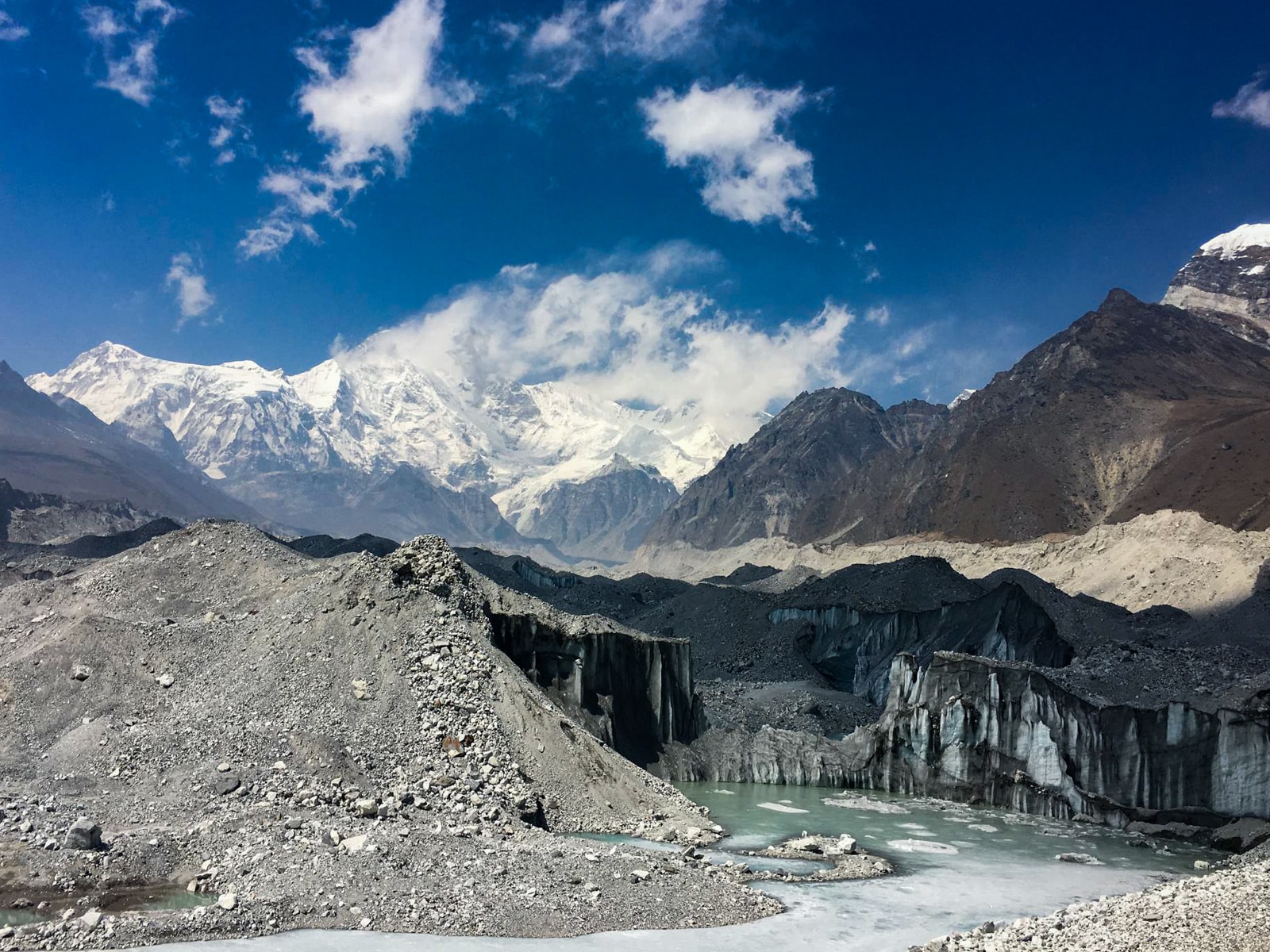
Ngozumpa Glacier
8. Get a properly fitted backpack
If you start the EBC trail from Lukla, you will be hiking for at least 12 days. When you start your EBC trek in Jiri (which, again, I highly recommend) add another six to seven days. That’s almost three weeks of hiking! Add to this the fact that you will have to carry all your gear, and it becomes clear you need a proper backpack.
My husband did the track with a not-so-great backpack and has a permanent injury in his shoulder as a result. Avoid buying a backpack online if possible—go to a proper outdoor store in person, and let the staff help you to find the perfect backpack for your body type. Once you’ve bought a good backpack, stuff it with approximately 10 kg of gear, which is the amount I carried after agonizing over every single item I put in my bag. Don’t over pack—every extra kilo will feel like it weighs three times as much while you’re trekking.
Go on a few practice hikes with your 10 kg backpack so you get used to carrying this weight. That will make it a lot easier once you are on the EBC trail, where factors like altitude and oxygen levels come into play.
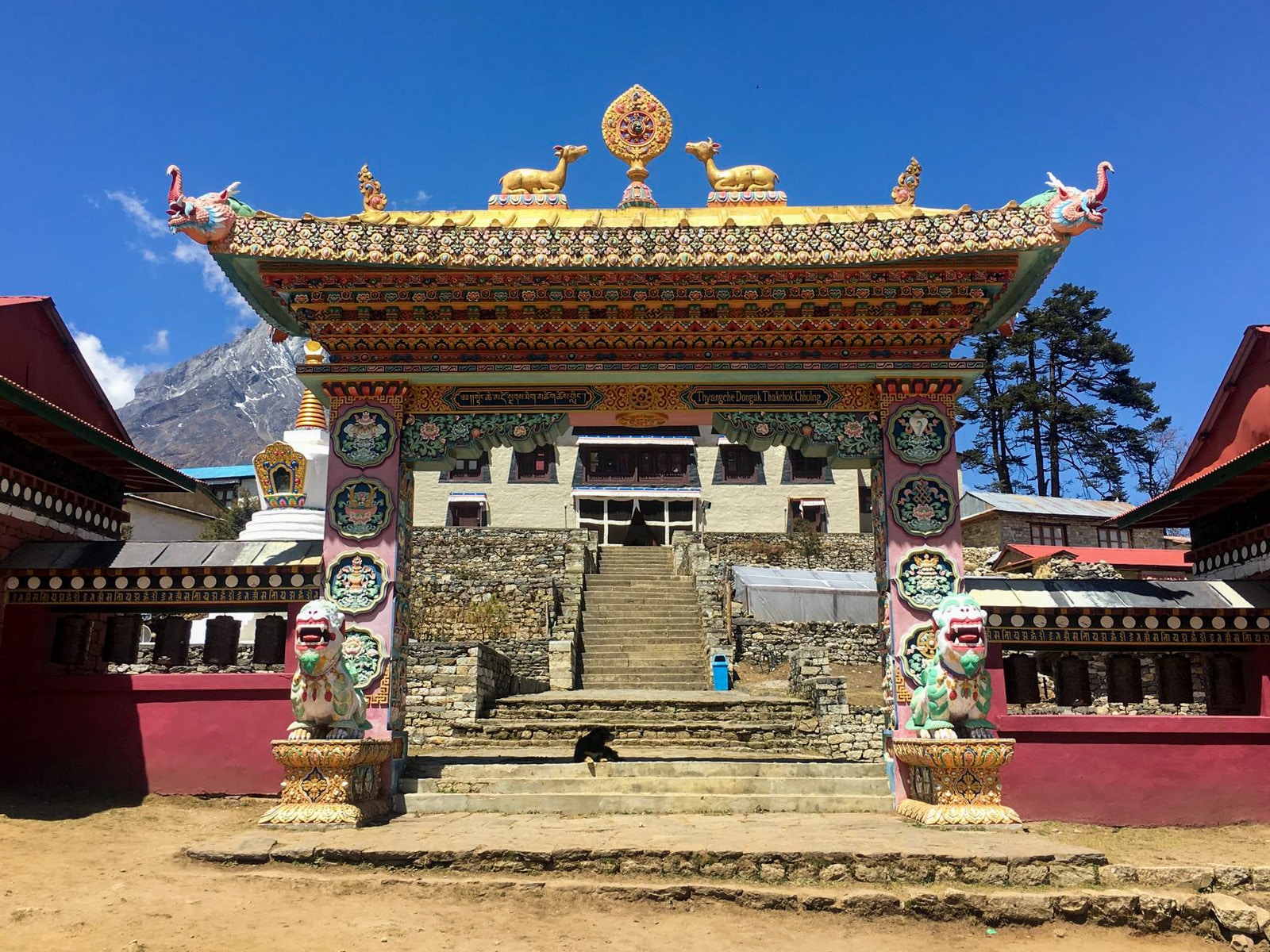
Tengboche Monastery
9. Buy some of your hiking gear in Kathmandu
If you don’t have all the necessary gear yet, consider buying the remainder of essential EBC items in Kathmandu to support local shops. There are a lot of knock off brands, but I was surprised by the quality of (most of the) gear we bought here. For example, I bought a down jacket (a fake North Face) which I have worn a lot in the past three years. It’s still doing an excellent job of keeping me warm.
Also, when you return from the EBC trail and you have gear you no longer need, consider donating it. Many small guesthouses collect items like warm sweaters, sleeping bags, hats and gloves to send to people who need them in other parts of Nepal.
Read: Cafes with fast wifi in Kathmandu
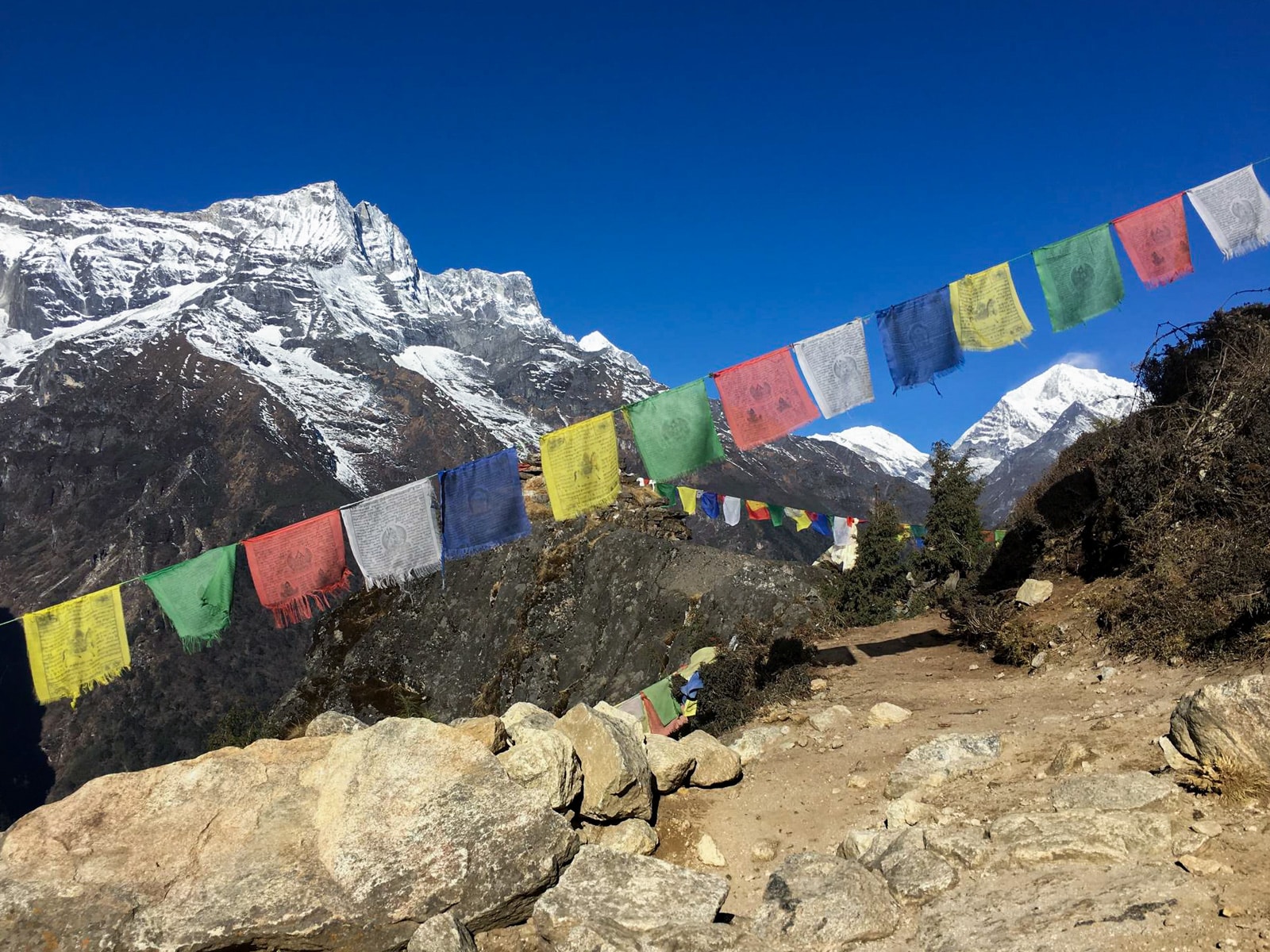
Along one of the trails near Namche Bazar
10. Enjoy the Everest Base Camp trek!
Last, but certainly not least, enjoy every single second of hiking the EBC trail! It will probably be one of the most challenging travels you do in your life, but also one of the most amazing experiences you’ll ever have.
There are very few places in the world where the landscape isn’t marred by manmade structures like electricity poles, roads, dams, factories, and so on. The Himalayas, while not completely untouched, are still wild, rugged, and majestic. Walking through the mountains will make you feel very small and you will come to appreciate the power of nature.
I will never forget standing at misty Lamjura La pass, surrounded by clouds and feeling like I was the only person in the world (in a non-creepy way😉). Admiring views over the snowy peaks in the valley near Dughla. Listening to the monks chant in Tengboche Monastery, watching the donkeys and yaks carry their loads from Nunthala to Namche Bazaar like they’ve done for centuries.
Hiking the Everest Base Camp trail is guaranteed something you will remember for the rest of your life!
Have more tips for multi-day hikers? Do share in the comments!
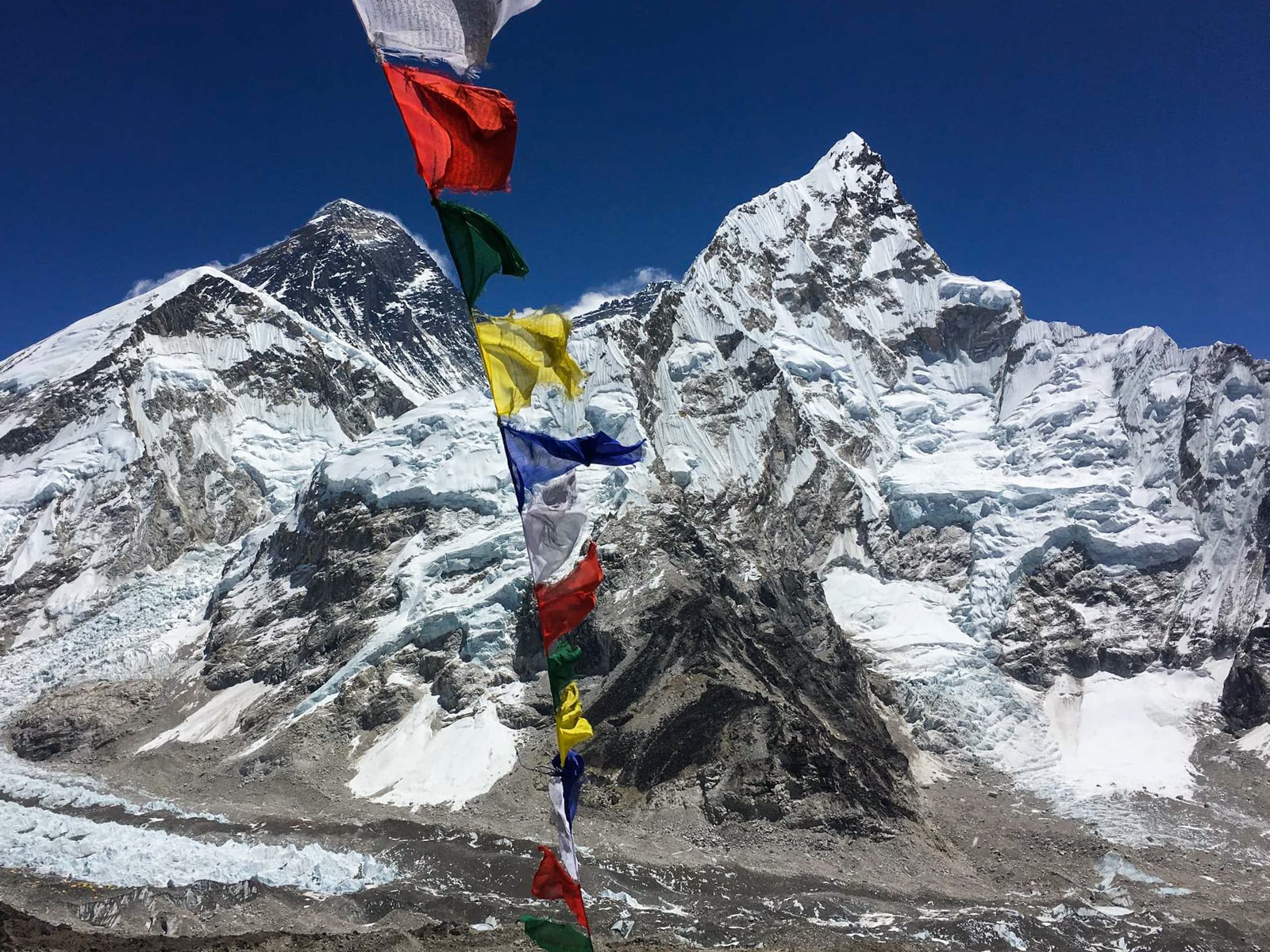
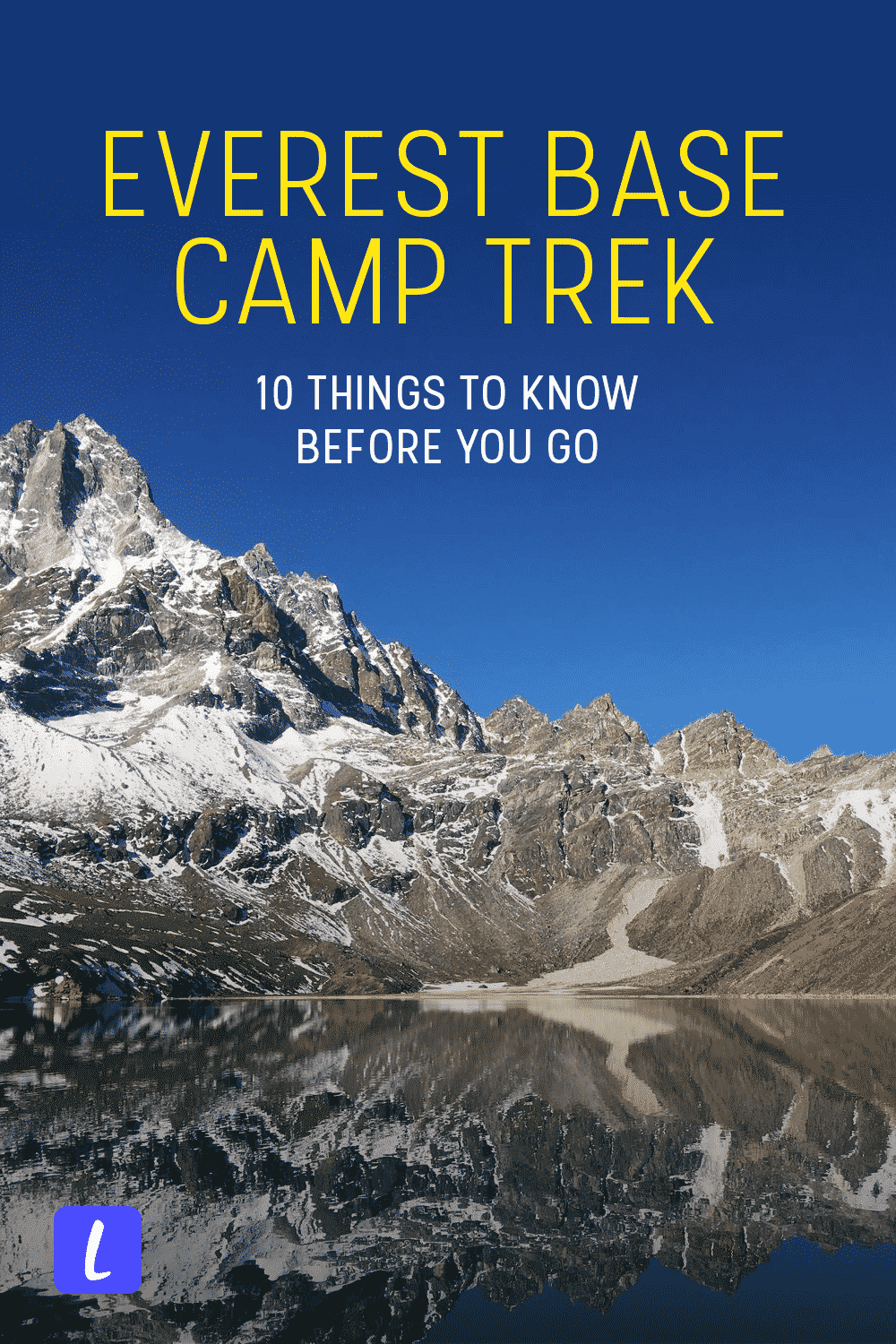
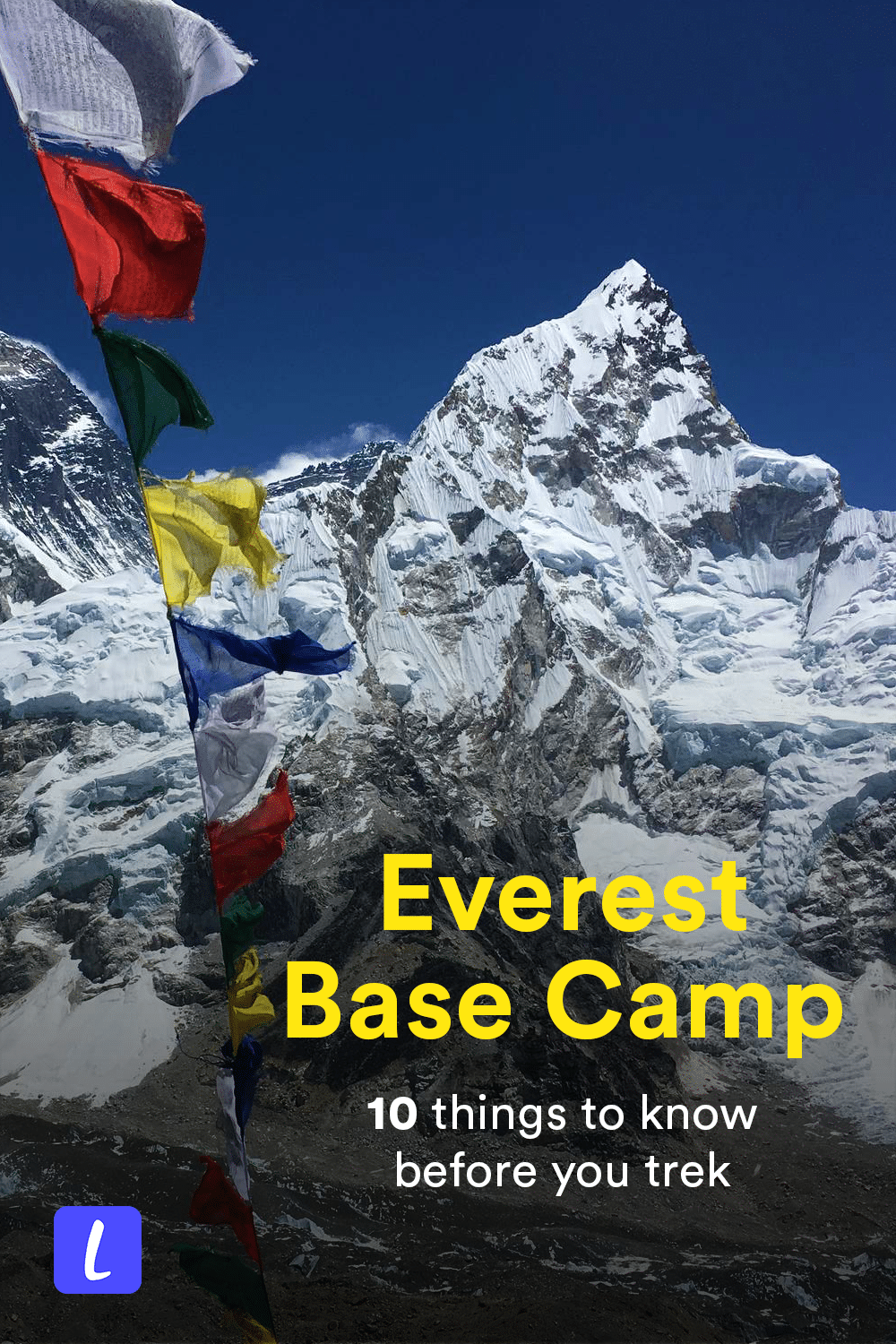
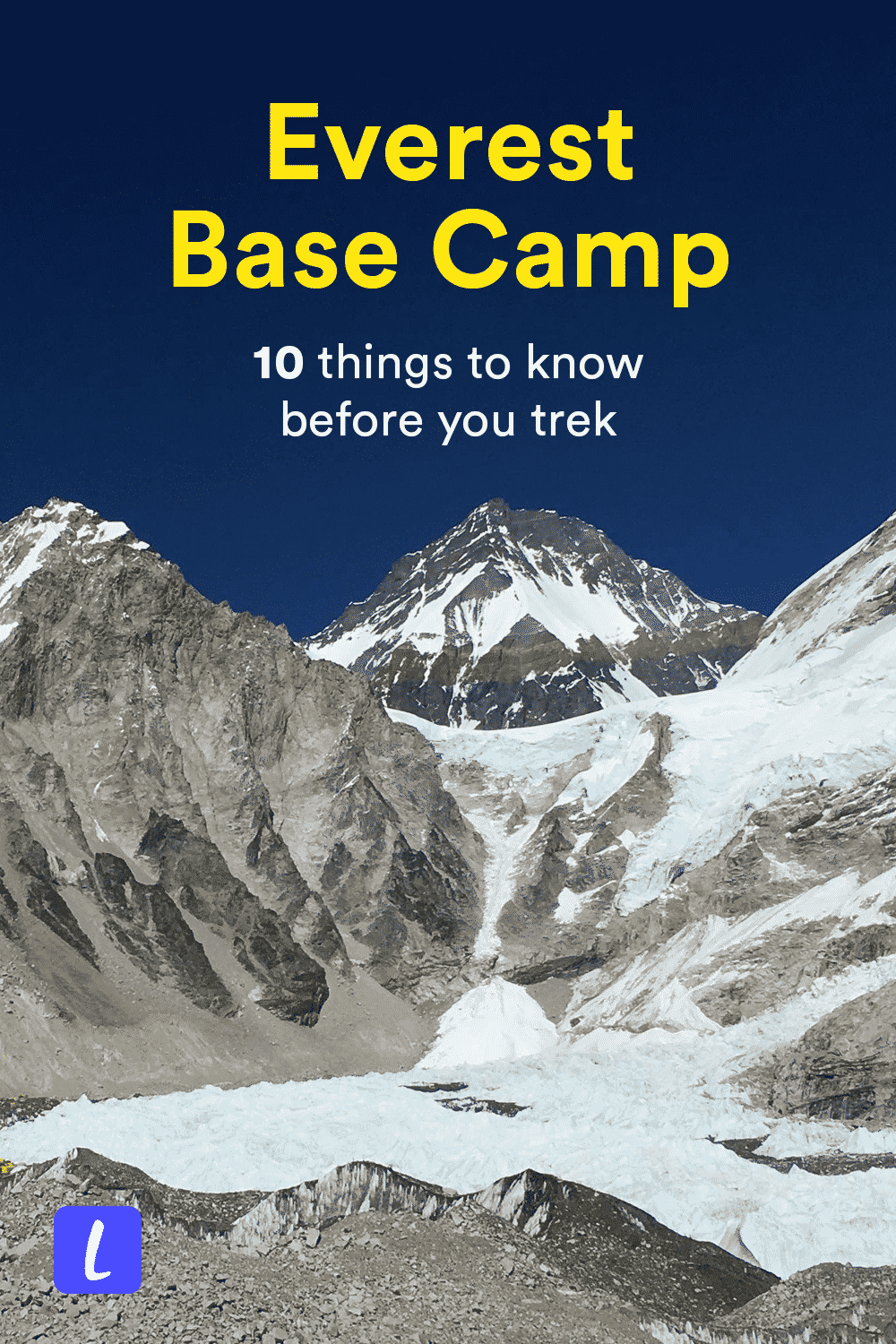


I went to the Qomolongma (Mount Everest) base camp in Tibet, 5200 metres above sea level, instead, and could go by car all the way. I was the only foreigner on my time of visit. Wonderful view of the top.